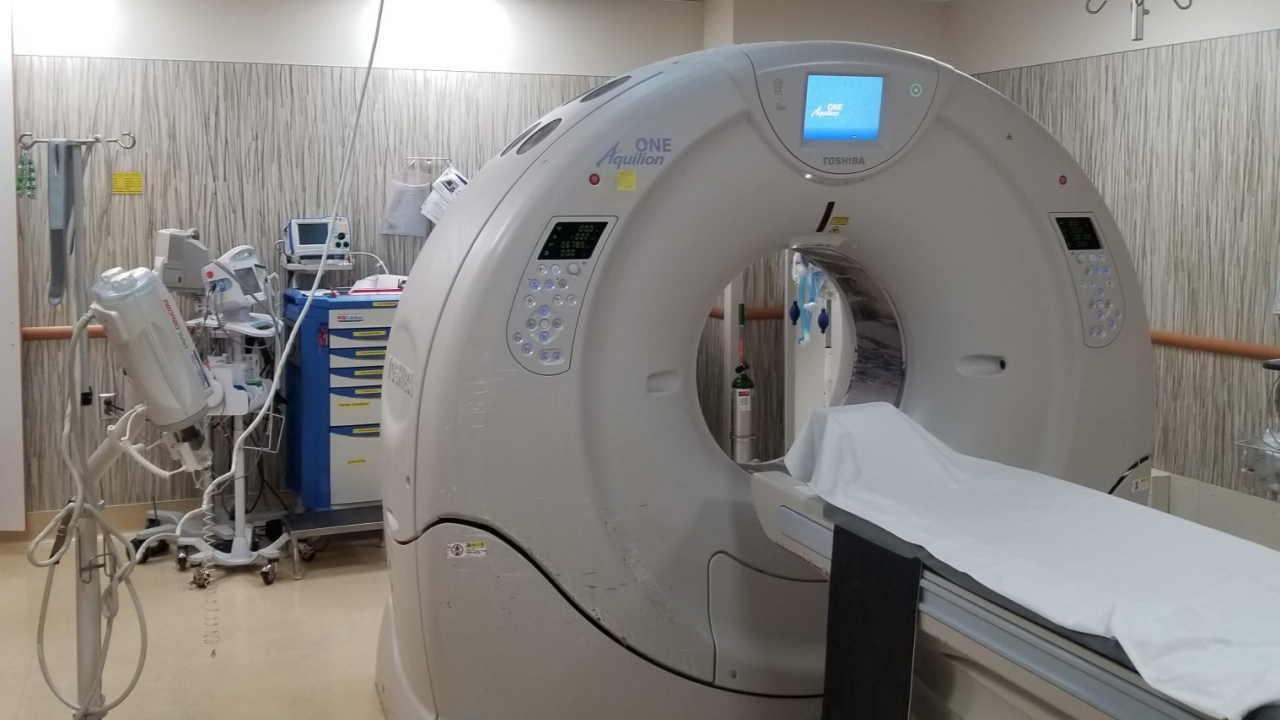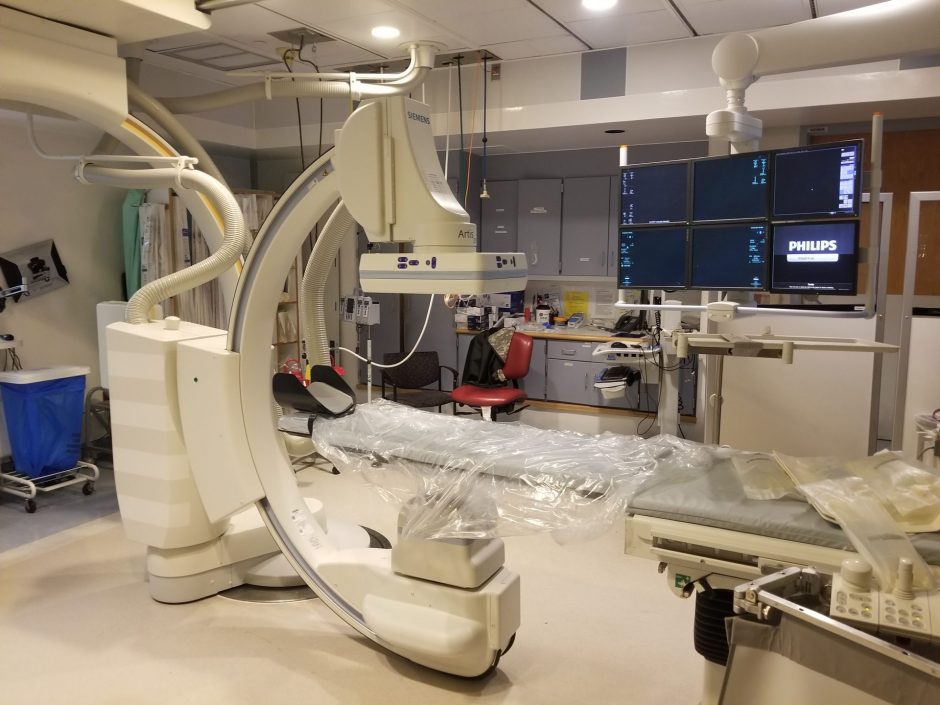
By Sam Oppenheim, SYRACUSE, N.Y. (NCC NEWS) — In the ever-changing world we live in, no area of treatment may have advanced as much as strokes. The Upstate Medical Center made it a priority, and put together the initial Upstate Comprehensive Stroke Center in the mid-2000s. Now, they are certified to treat all types of strokes.
Last year, the hospital saw roughly 2,000 patients for stroke-related issues and about 900 were diagnosed. Dr. Josh Onyan, the manager of the stroke program at Upstate, laid out just how much the treatment has changed.
“30 years ago if you had a stroke, you went to the emergency room and that was it,” said Onyan. “They couldn’t do much for it.”

But times have changed, and the technology has advanced. The operating table seen on the right takes photos of the patient from above, below, left and right, and puts together a stitched-together image of the brain. Those images are projected on the monitors seen in the picture for doctors to examine.
One person making decisions in that room is Vascular Interventional Neurologist Dr. Hesham Masoud. With such advancements to technology that deals directly with diagnosing and analyzing strokes, he believes we are farther along with treatment than we are with neurorehab.
“I think about how important physical therapy is and neurorehabilitation is,” said Masoud. “I can’t take out a clot every stroke in case. But rehab, that’s going to be everybody.”
The condition can leave those unable to do daily tasks they once did without a single thought. Most stroke patients are released in five days or less, but the care does not end there. Masoud described the multiple phases that patients go through once the operation has taken place.
“We’re doing early therapy, diagnosis, secondary prevention and then neurorehab,” said Masoud.
Regardless of future advancements, one of the most crucial parts of dealing with strokes is educating the public. Even someone with extensive knowledge understands how important that is.
“I think there’s still room in some basic, boring stuff like telling people what a stroke is,” said Masoud. “There’s a lot of benefit in that basic message.”
While technological advancements in diagnosis and treatment will save lots of lives, that basic message may just save some as well.




